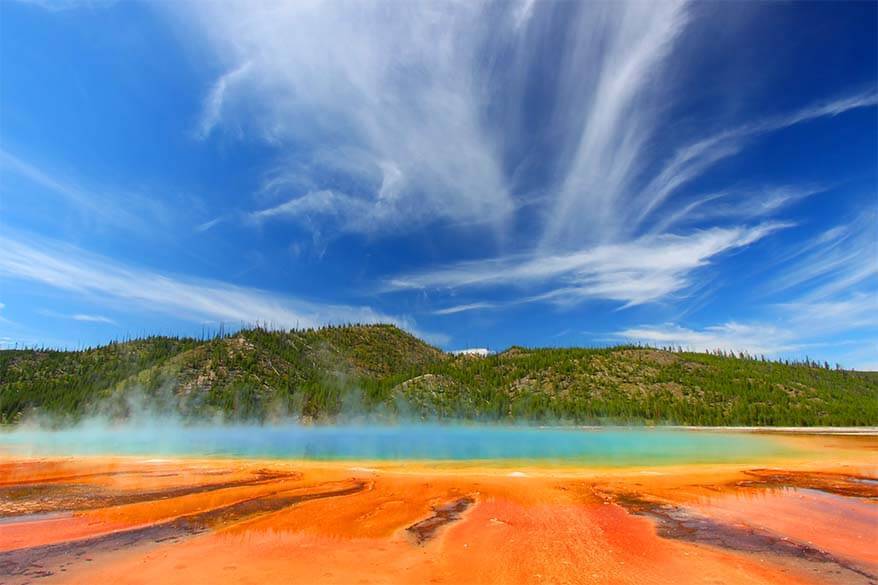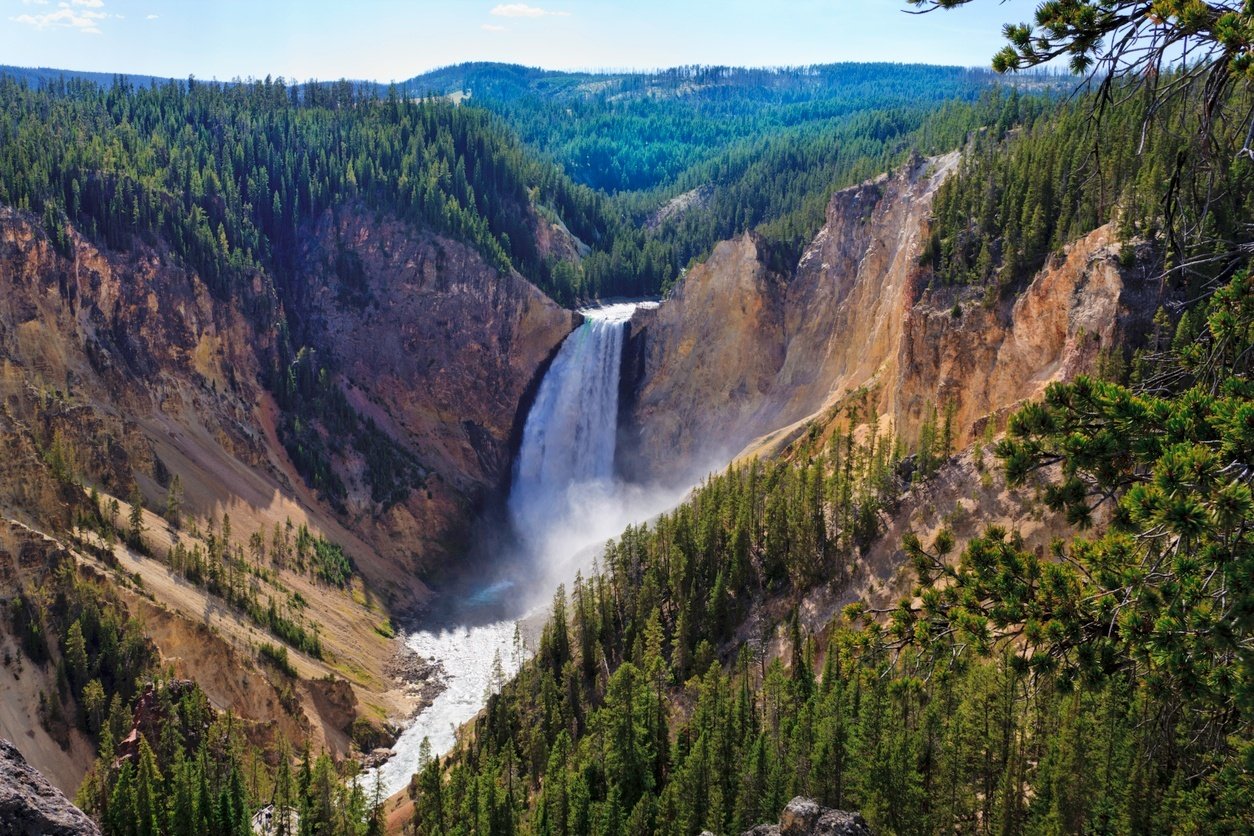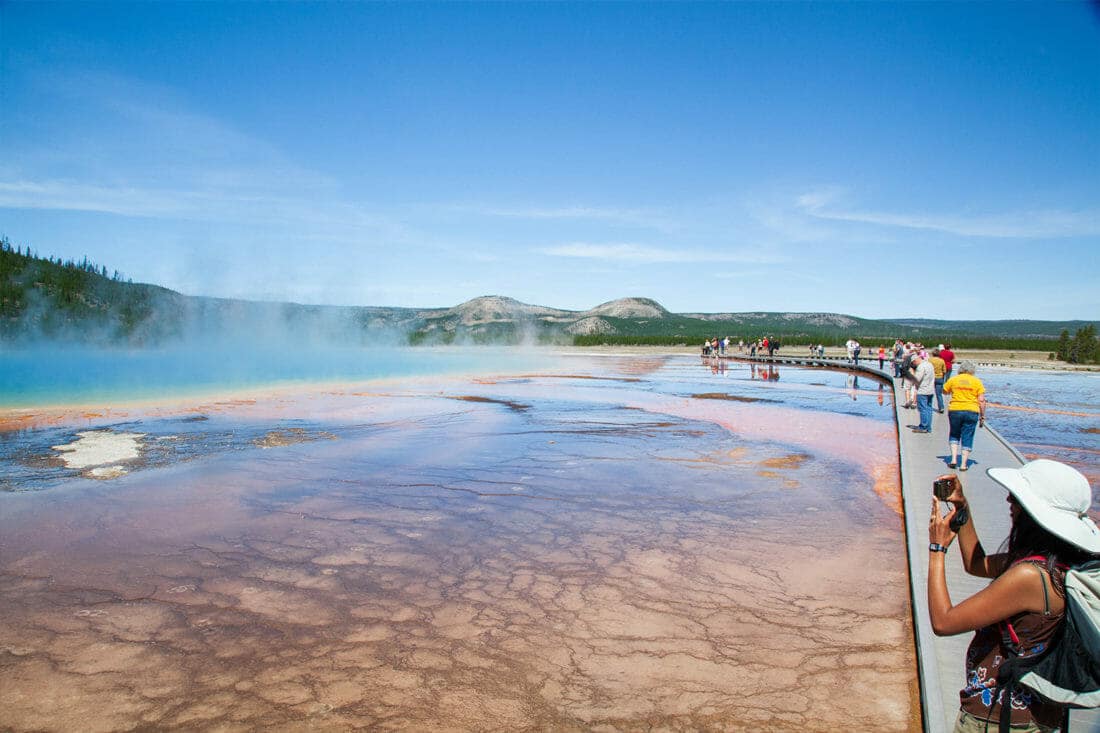The best time to visit Yellowstone National Park is from April to May or September to October. These months offer mild weather and fewer crowds.
Yellowstone National Park, the world’s first national park, captivates visitors with its stunning landscapes and diverse wildlife. The park’s geothermal features, including geysers and hot springs, attract millions of tourists annually. Visiting during spring and fall ensures a more tranquil experience, avoiding the summer rush.
Wildlife is more active, and the weather is pleasant for outdoor activities. The park’s dramatic scenery, from majestic mountains to lush forests, becomes even more breathtaking during these periods. Planning your trip during these off-peak months allows you to fully appreciate Yellowstone’s natural beauty and serene environment.
Table of Contents
Spring In Yellowstone
Spring in Yellowstone National Park is a magical time. As the snow melts, the park bursts into life. Vibrant wildflowers blanket the meadows, and wildlife becomes more active. Spring is ideal for experiencing Yellowstone’s natural beauty without the summer crowds.
Weather And Conditions
Spring weather in Yellowstone can be unpredictable. The temperatures range from cold to mild. Daytime temperatures typically range from 30°F to 60°F. Nighttime temperatures can drop below freezing. Snow is still possible in early spring.
A table can help you plan your visit based on average temperatures and precipitation:
| Month | Average High (°F) | Average Low (°F) | Precipitation (inches) |
|---|---|---|---|
| March | 39 | 12 | 1.3 |
| April | 49 | 22 | 1.5 |
| May | 59 | 31 | 2.0 |
Wildlife Activity
Spring is a wonderful time for wildlife watching in Yellowstone. Animals are more visible as they come out of hibernation. Bison calves, also known as “red dogs,” are born in April and May. Elk, bighorn sheep, and bears are also more active.
- Look for bear cubs with their mothers.
- Watch for migrating birds returning to the park.
- Spot bison calves playing in the meadows.
Visitor Tips
Visiting Yellowstone in spring requires some preparation. Here are a few tips to enhance your experience:
- Dress in layers to stay warm and dry.
- Bring waterproof boots for muddy trails.
- Check road conditions before traveling.
- Carry bear spray and know how to use it.
- Start your day early to avoid afternoon thunderstorms.
Spring in Yellowstone offers a unique experience. Enjoy the beauty, wildlife, and tranquility of this season.
Summer Highlights
Yellowstone National Park in summer is a magical experience. The park comes alive with vibrant colors and bustling wildlife. It’s the perfect time to explore and enjoy the great outdoors.
Peak Season Benefits
Summer is the peak season at Yellowstone. This time offers many benefits:
- All park facilities are open.
- Weather is warm and pleasant.
- Wildlife is easy to spot.
Visitors can enjoy longer days. This means more time for adventures.
Popular Attractions
Yellowstone has many popular attractions in summer:
| Attraction | Description |
|---|---|
| Old Faithful | A famous geyser that erupts regularly. |
| Grand Prismatic Spring | The largest hot spring in the U.S. |
| Yellowstone Lake | A beautiful lake for boating and fishing. |
These attractions draw visitors from around the world. They are must-see spots in the park.
Crowd Management
Summer is busy, but there are ways to manage crowds:
- Visit early in the morning or late in the afternoon.
- Use less popular entrances.
- Explore off-the-beaten-path areas.
These tips help you enjoy the park with fewer people around.
Fall Adventures
Yellowstone National Park in the fall is simply magical. Cooler temperatures, fewer crowds, and vibrant foliage make it a perfect time for adventures. Let’s explore the best of what fall has to offer in Yellowstone.
Scenic Beauty
Fall transforms Yellowstone into a canvas of rich colors. The trees display a stunning array of reds, yellows, and oranges. The crisp air and clear skies enhance the views. Wildlife is more visible as they prepare for winter. The landscapes are like paintings, making every turn a surprise.
| Location | Fall Highlights |
|---|---|
| Lamar Valley | Golden meadows and elk sightings |
| Grand Prismatic Spring | Steaming hot springs against colorful trees |
| Yellowstone Lake | Mirror-like reflections of fall foliage |
Best Hikes
Fall is ideal for hiking in Yellowstone. The cooler weather is perfect for longer hikes. Trails are less crowded, offering a peaceful experience.
- Fairy Falls Trail: A moderate hike with stunning fall views.
- Mount Washburn: Panoramic vistas and vibrant foliage.
- Uncle Tom’s Trail: Close-up views of the Lower Falls amidst fall colors.
Photography Tips
Fall in Yellowstone offers endless photography opportunities. Here are some tips:
- Golden Hours: Capture the best light during sunrise and sunset.
- Foreground Interest: Include colorful leaves or wildlife in your shots.
- Weather Conditions: Use mist and fog for dramatic effects.
- Long Exposure: Capture the movement of water and steam.
Remember to bring extra batteries and memory cards. The beauty of Yellowstone in fall will fill them up quickly!

Credit: fullsuitcase.com
Winter Wonderland
Yellowstone National Park transforms into a magical Winter Wonderland during the colder months. Snow blankets the park, creating a serene and picturesque landscape. Winter offers a unique experience with fewer crowds and mesmerizing scenery.
Snow Activities
Winter in Yellowstone means exciting snow activities for everyone. Visitors can enjoy snowshoeing through the snowy trails. The park also offers cross-country skiing for enthusiasts. For a thrilling adventure, try a guided snowmobile tour. These activities provide a unique way to explore Yellowstone’s winter beauty.
Quiet Solitude
Winter brings a sense of quiet solitude to Yellowstone. The usual summer crowds are gone, leaving the park peaceful. This calm environment allows for better wildlife viewing. You might spot bison, elk, and wolves against the snowy backdrop. The serene atmosphere is perfect for photographers and nature lovers.
Travel Precautions
Visiting in winter requires some travel precautions. Dress in layers to stay warm in freezing temperatures. Check road conditions regularly, as snow can affect travel. Carrying a map is essential since some areas may have limited cell service. Always inform someone about your travel plans for safety.
Best Time For Wildlife Viewing
Yellowstone National Park is a treasure trove for wildlife enthusiasts. The best time to visit for wildlife viewing varies by season. Each season offers unique opportunities to see different animals. Learn about the best times and places to see wildlife in Yellowstone.
Animal Behavior By Season
Wildlife behavior changes with the seasons. Here’s a quick guide on what to expect:
- Spring (April to June): Animals emerge from hibernation. Bears are most active. Baby animals are born.
- Summer (July to September): Animals graze in open meadows. Bison and elk are abundant.
- Fall (October to November): Elk mating season begins. Hear elk bugling. Bears prep for hibernation.
- Winter (December to March): Wolves are easier to spot. Bison move to lower elevations.
Top Spots For Sightings
Yellowstone offers numerous spots for prime wildlife viewing. Here are some top locations:
| Location | Best Time | Common Wildlife |
|---|---|---|
| Lamar Valley | Year-round | Wolves, bison, bears |
| Hayden Valley | Spring to Fall | Bison, elk, grizzly bears |
| Mammoth Hot Springs | Winter | Elk, bighorn sheep |
| Yellowstone Lake | Summer | Birds, fish, otters |
Each of these locations offers a unique glimpse into Yellowstone’s diverse wildlife. Plan your visit accordingly to maximize your sightings.

Credit: blog.bozemancvb.com
Geothermal Features
Yellowstone National Park is famous for its amazing geothermal features. These natural wonders include geysers, hot springs, and mudpots. Each feature offers a unique glimpse into the Earth’s geothermal activity. Visiting these spots at the right time enhances your experience.
Geyser Seasons
Geysers are one of Yellowstone’s main attractions. The best time to see them is during late spring and early summer. During this period, geysers are most active. Also, the weather is mild, making it pleasant for visitors.
Here is a quick guide to geyser seasons:
| Season | Geyser Activity |
|---|---|
| Spring | High |
| Summer | Moderate to High |
| Fall | Moderate |
| Winter | Low |
Hot Springs And Mudpots
Hot springs and mudpots are equally fascinating. The hot springs are most vibrant in summer. The colorful bacteria thrive in warm temperatures. Mudpots are best viewed in late summer. By this time, the mud is thick and bubbling.
Key points to remember:
- Hot Springs: Best in summer.
- Mudpots: Best in late summer.
Safety Tips
Safety is crucial when visiting geothermal features. These areas are unpredictable and can be dangerous. Follow these safety tips:
- Stay on marked paths.
- Keep a safe distance from hot water.
- Supervise children closely.
- Do not touch or throw objects into features.
By following these guidelines, you ensure a safe and enjoyable visit.
Insider Tips
Yellowstone National Park is a treasure trove of natural wonders. Knowing the best time to visit can make your trip more enjoyable. Here are some insider tips to help you plan your adventure.
Avoiding Crowds
The park gets crowded during peak season. To avoid the throngs, visit in early spring or late fall. These times offer fewer visitors and cooler weather. Also, try to arrive at popular spots early in the morning. This way, you can enjoy the sights without feeling rushed.
Packing Essentials
Proper packing is crucial for a successful trip. Here are some must-have items:
- Comfortable walking shoes – The park has many trails.
- Layered clothing – Weather can change quickly.
- Reusable water bottle – Stay hydrated while exploring.
- Camera – Capture the stunning landscapes.
- Map – Cell service is limited in some areas.
Local Recommendations
Local tips can enhance your visit to Yellowstone. Here are some recommendations:
| Activity | Recommendation |
|---|---|
| Best Hike | Lamar Valley – Less crowded and wildlife sightings. |
| Best Viewpoint | Artist Point – Offers a breathtaking view of the canyon. |
| Best Time for Geysers | Early Morning – Fewer crowds and better light for photos. |
Following these insider tips will help you make the most of your visit. Enjoy the beauty and wonder of Yellowstone National Park!

Credit: yellowstonesafari.com
Frequently Asked Questions
What Is The Best Month To Visit Yellowstone National Park?
The best month to visit Yellowstone National Park is September. The weather is pleasant, and crowds are smaller.
How Many Days Is Enough To See Yellowstone?
Three to four days is enough to see Yellowstone. This allows you to explore major attractions and enjoy outdoor activities.
What Is The Warmest Month At Yellowstone National Park?
The warmest month at Yellowstone National Park is July. Average temperatures range from 70°F to 80°F during the day.
What Airport Do You Fly Into To Go To Yellowstone National Park?
Fly into Jackson Hole Airport, Yellowstone Airport, or Bozeman Yellowstone International Airport to visit Yellowstone National Park. All are nearby.
What Is The Best Month To Visit Yellowstone?
June through September offer the best weather and wildlife viewing opportunities.
Conclusion
Choosing the best time to visit Yellowstone National Park enhances your experience. Summer offers warm weather and vibrant wildlife. Fall provides stunning foliage and fewer crowds. Winter brings unique snowy landscapes and tranquility. Spring features blooming flowers and fewer tourists.
Plan your trip based on your preferences for an unforgettable adventure.
